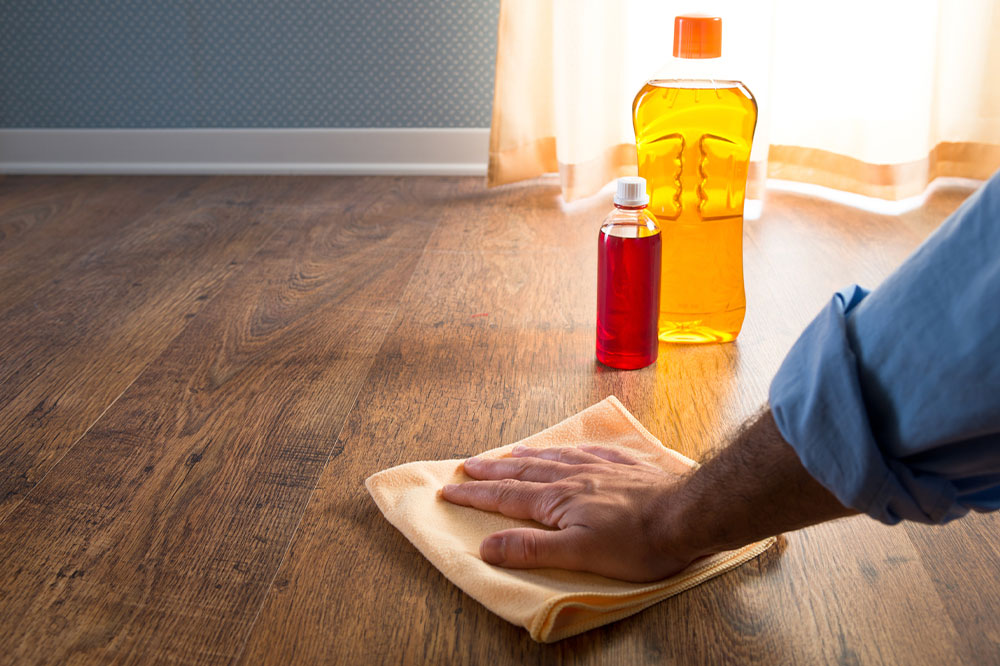14 Professional Cleaning Secrets for a Tidy Home

A tidy home is a symbol of a clutter-free existence and overall well-being. Studies have even demonstrated correlations between tidy homes and enhanced confidence and happiness. Clean surroundings are essential to ensuring the freshness of the air and preventing allergies. Facilitating a clean home is all about going back to the basics and understanding some simple yet cardinal principles that experts follow to maintain spick-and-span surroundings. Here are some of these home-cleaning secrets:
- Avoid using a vinegar and bleach solution
A mixture of vinegar and bleach gives rise to a poisonous chlorine gas, which should not be inhaled; thus, vinegar and bleach should be used separately as cleaning solutions but not together. - Clean using natural products
Today, many effective store-bought cleaning products are readily available on the market. However, natural cleaning products remain immensely popular for a reason. These solutions almost always remove stains and facilitate a spick-and-span home. For example, vinegar and baking soda solutions can effectively remove hard stains on walls and other surfaces. In addition, orange, lime, and some other citrus fruits act as natural cleaning agents to clean bathroom floors, walls, cutlery items, and kitchen equipment like cutting boards, knives, and plates. - Clean the sink regularly
Global Hygiene Council reports suggest that an inch of a kitchen sink contains roughly 17,000 bacteria. Thus, cleaning one’s sink is essential to prevent bacterial infections and other diseases. An effective way to clean one’s sink is to fill it up with warm water, add a tablespoon of bleach to it, and let it rest in the sink for about five minutes. This solution can also be used to clean the kitchen tap. - Dust the rooms well before vacuuming
Dusting all furniture pieces, such as walls, showpieces, and shelves, before vacuuming them can ensure that the vacuum cleaner releases and later absorbs all the dust particles on these surfaces. Dusting after vacuuming causes these particles to float in the air, leading to allergies and infections. - Clean the ceiling first
A top-down approach to cleaning can significantly reduce one’s efforts in the process, as the dust released from the ceiling and topmost parts of the wall to the floor can be cleared while cleaning the floor. Thus, the ceiling and the objects suspended from it, such as ceiling fans and chandeliers, and other surfaces situated at a height, including attics and the top of wardrobes, should be cleaned first. - Descale the coffee maker
Descaling the coffee maker rids it of limescale, of which deposits are found in large quantities in many coffee makers due to minerals like calcium and magnesium being deposited by water. A vinegar solution works best to descale coffee makers thoroughly. Descaling tablets are also readily available today. - Make effective use of the dishwasher
Besides cleaning your dishes to perfection, a dishwasher also cleans several other household products, such as stove burner liners, gardening products, toothbrush organizers, and refrigerator shelves. Using a dishwasher to clean can save time and energy and ensure high-quality cleaning. - Clean sponges or use different ones for each cleaning session
The cleaning sponge becomes a petri dish for bacteria and dust particles as it absorbs dust from various surfaces. Using the same sponge repeatedly can reduce cleaning effectiveness after two to three cleaning sessions and, thus, should be cleaned or replaced. Cleaning a sponge is easy; soaking it in bleach solution for five minutes and rinsing it should do the trick. - Use microfiber cloths
Microfiber cloths are great absorbents and can come in extremely handy during cleaning. These can be used to remove grease, bacteria, dirt, and germs from various surfaces, including kitchen worktops, tables, and shelves, and can be cleaned and reused effortlessly. - Clean all rooms on the same day
While it is a personal choice to clean one room a day or all rooms on the same day, the former can extend the cleaning process for days and be tiring for homeowners. Thus, it is better to designate one day to clean the entire house. It helps to carry out home cleaning when all family members are around, as the work can be split equally among all inhabitants to avoid exertion. Moreover, cleaning the home together can be fun and increase family bonding time. - Clear the clutter first
Ideally, the first step in one’s cleaning session should be decluttering. Decluttering the home helps remove the mess around it and allows easy access to corners and different parts of the home. Hence, all areas in the home, including the space under beds and tables, should be checked for any objects that should be kept aside to facilitate effective cleaning. - Clean and gather all the cleaning materials
The cleaning materials can also collect dust with time and should be thoroughly cleaned using bleach or vinegar before cleaning the home. Moreover, it helps to gather all the cleaning materials in a bucket or caddy beforehand to save time finding these tools during the cleaning process. - Know what solutions to use for which surfaces
Although certain all-purpose cleaners and natural solutions can be used on all surfaces, some products are better suited to cleaning some surfaces and objects. For example, a disinfectant should be used to clean and sanitize surfaces and objects frequently touched, such as taps, switches, remotes, and doorknobs. Vinegar and water solutions are effective on flat surfaces like wooden furniture, glass panes, mirrors, and tiled walls or floors.
Last, cleaning should be perceived as fun rather than a chore. Using new and cutting-edge cleaning equipment, trying different cleaning methods, and engaging with friends and family can make it an interesting and enjoyable experience.






